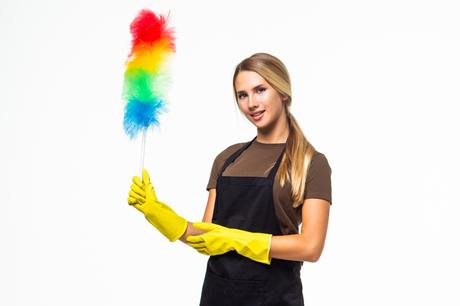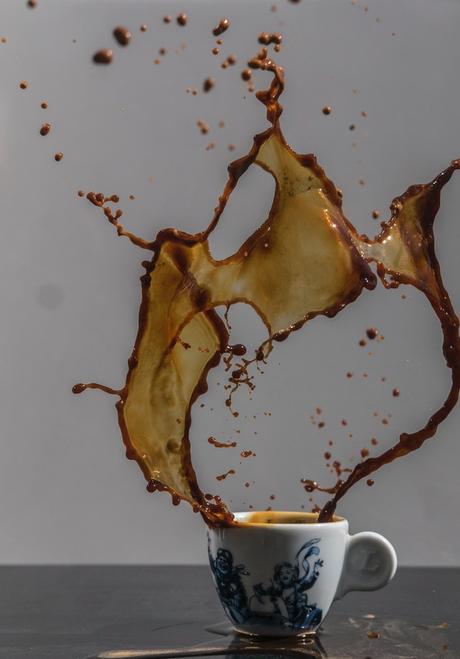
Canvas prints are a fantastic way to showcase your most cherished memories. Hang them on your wall and reminisce the best times of your life. You can savor them all in this exclusive format, from vacations and milestones to portraits of family and fido.
Another benefit of using canvas prints is the flexibility to bring your creative side to work. Since they are available in numerous sizes and styles, you can arrange them in distinct patterns such as split canvases to show off gorgeous skylines or photo collages to bring lots of memories together.
Since photo canvases are a vital part of the home's decor, keeping them spotless and in good condition is essential. However, there are times when these canvases can get dirty and greasy from dust, stains, smudges, and even accidental spills.
A Problem or an Opportunity?
Upon seeing a stain on their canvas prints, most people consider the professional restoration as a suitable option. However, this can be costly, and you may need to wait a long time to get your canvas back.
But do you know that you don’t have to see this as an expensive and troublesome problem?
Definitely, Not!
Instead of fretting over the canvas, you can transform the problem into a DIY cleaning project. It's inexpensive and somewhat fun! Below, we learn how to keep the canvas prints from getting dirty and, when they do, how to clean them up.
Let's dive in
How to Keep Canvas Prints From Getting Dirty?
If you have canvas prints, they will get dirty and dusty at some point in time. However, you can delay such issues by taking care of the canvases from the word go. There are a few straightforward tips that can help you keep these prints clean in the first place.
- Avoid hanging your canvas prints in damp places since moisture damages the surface and attracts more dirt. It can also lead to mold formation on the canvas.
- Put the canvas print in a wooden frame with a glass front to avoid dust and other pollutants-related damage.
- Avoid direct physical contact with the print. The oils from the skin can damage the print easily. So, if you're moving or storing the canvas, ensure that you use clean gloves.
- Try to place the print away from a direct sunlight source like a window. Direct sunlight will quickly fade the colors and eat away the crispiness of the image. It also leads to the canvas turning yellow.
Now that we know how to keep the canvas away from dirt and other contaminants, let's learn about cleaning the prints.
Everyday Cleaning
The best way to keep a canvas print clean is to frequently follow the cleaning method to ensure that you do not allow any dirt to build up.
- Take a lint-free soft wipe cloth and gently dust the canvas print.
- You can also use a high-quality feather brush to wipe away the dirt regularly.
- Be gentle and do not try to remove all dust in a single wipe.
- Never give a hard rub to the print as it will damage the surface.

How to Remove Stubborn Grime From Canvas Prints?
Unfortunately, some dirt buildup, commonly referred to as grime, can accumulate on the surface of the canvas. You will have to make slight adjustments to your everyday cleaning routine to remove them.
- Take some soapy water and pour a few drops on the cloth.
- Gently rub the cloth against the dirt marks. Do not exert too much pressure since it can cause irreparable damage to the canvas surface.
- As a rule of thumb, never soak the wipe in the soap water since it can add too much moisture and damage the print's surface. In some cases, it can also lead to ink leakage, severely discoloring the canvas.
Some experts believe that olive oil-based soaps are the best option for a clean canvas print. Maybe you can give them a try the next time. But do a small spot test first to ensure it offers the desired results.
What if You Spill Coffee on Your Canvas?
Let's not pretend; we've all spilled coffee and messed up carpets, sofas, and anything else one can imagine. Coffee stains on canvas prints are uncommon, but they exist. Thankfully, there is a way to remove them.
But first, wipe any spilled coffee with the help of a dry cloth or sponge. This removal helps clear the surface, and you will know the area that requires careful cleaning.
For coffee stains, white vinegar is an excellent cleaning agent.
- Mix a teaspoon of white vinegar with four cups of cold water.
- Spray the solution onto a clean, lint-free cloth and gently dap the affected area.
- You will likely need to dab/blot the cloth for a while, especially if the stain is old.
There is an alternative option available as well. Let's dig into that!
- Take a quart of warm water and add about a dozen teaspoons of dishwashing liquid. Please do not use laundry liquids since they are harsher and can damage the print's surface.
- Mix the solution and damp a soft washcloth with the solution.
- Dab the damp cloth onto the affected surface. You can also use it in a circular motion.
- Wipe off any leftover moisture with a dry cotton cloth once the stains are removed.

How to Deal With Yellowing of Canvas Prints?
Just like bags, shoes, and photo prints, canvas products also tend to get some yellowing as they age. The hues are especially prominent on the edge of the canvas. The main culprit of this issue is exposure to the sun. The good news is that this yellowness on canvas can be removed.
Here is how:
- Make a mixture of half a cup of tartar sauce (no, we're not making fish fillets) and warm water. Mix them well until it becomes a consistent paste.
- Apply the paste to the affected areas and leave overnight. If you're cleaning a canvas bag instead of the canvas prints, you can soak the bag in a wet tartar sauce solution for best results.
- However, soaking a canvas print will damage it and should never be done.
- Remove the paste with a damp cloth and ensure there is none leftover.
- These steps should remove the yellowness in the canvas.
However, if there is any yellow surface left, there is another option:
- Make a paste with equal parts of baking soda and water.
- Apply the paste to the affected area and leave overnight.
- Remove the paste with a wet cotton cloth and pat it dry.
- These additional steps should remove any leftover yellow stains and leave you with a lovely clean canvas print.
Countering The Smoke Residue And Nicotine
Your canvas print can be affected by smoke from a fireplace or consistent smoking around it’s area. The nicotine marks look particularly ugly on a canvas and can take away its charm. Here is how you can clean it with ease:
- Start with a piece of white bread. Gently rub it against the damaged area, and it should suck the marks produced by smoke.
- If bread fails to eat into the marks, make a solution with three parts water and one part white vinegar in a bowl and mix well.
- Ideally, use distilled water since regular water can leave its own impressions.
- Soak cotton balls in the solution and gently rub the affected areas. Ensure that the liquid solution is not dripping out of the balls, which can affect other parts of the print.
- The cotton should help suck out the nicotine marks from the print's surface.
How to Deal With Grease Stains on Canvas?
Grease generally finds a way on canvas prints, whether you spill some gravy on them or place the photos on the kitchen wall. It can make them appear unattractive, but thankfully there are ways to eliminate it.
- Take a gentle dishwashing liquid and let a few drops sit on the grease for fifteen minutes.
- Use isopropyl alcohol on a soft piece of cloth to remove both the liquid and the grease from the canvas print.
- If the grease is still there after some time, use WD-40 and leave it for about half an hour. Do not use it if the grease is on the printed area of the canvas.
You can also use the water and baking soda mixture mentioned above to remove mild grease on the canvas. It should help remove the stains effectively.
Canvas Cleaning Mistakes to Avoid
Cleaning your canvas prints is an important task. If you're not careful, there is a possibility that you may end up damaging the image itself. You must take some precautions to ensure that your precious prints remain clean and damage-free.
- Do not spray water directly onto the canvas print. It will overly dampen the image and can spoil the printing. Spray the water on a wiped cloth and clean instead.
- Do not soak a wipe cloth for cleaning a canvas. It can leave marks on the surface. The moisture can also damage the picture.
- Do not use strong chemicals as they can easily ruin the texture of your canvas print. Use soapy water instead, which gets the job done without much effort.
- Grime can be challenging to remove, but do not vigorously rub the surface. Too much rubbing can leave marks on the canvas surface and leave an ill effect on the appearance of the print.
The Bottom Line
Canvas prints are often used as an essential element of a living and family room's décor. They carry so many memories from the good ole times. Needless to say, they add much the charm to our living spaces.
However, when they get dirty or greasy, it can ill impact the entire décor. Keeping the prints clean is a pretty simple job. All you need is to be consistent and know the right tools required for the task.
Cleaning the prints periodically allows them longevity. When there is a dirt buildup, grease, or smoke damage, you can use several remedies to clean them and make them look brand new.
